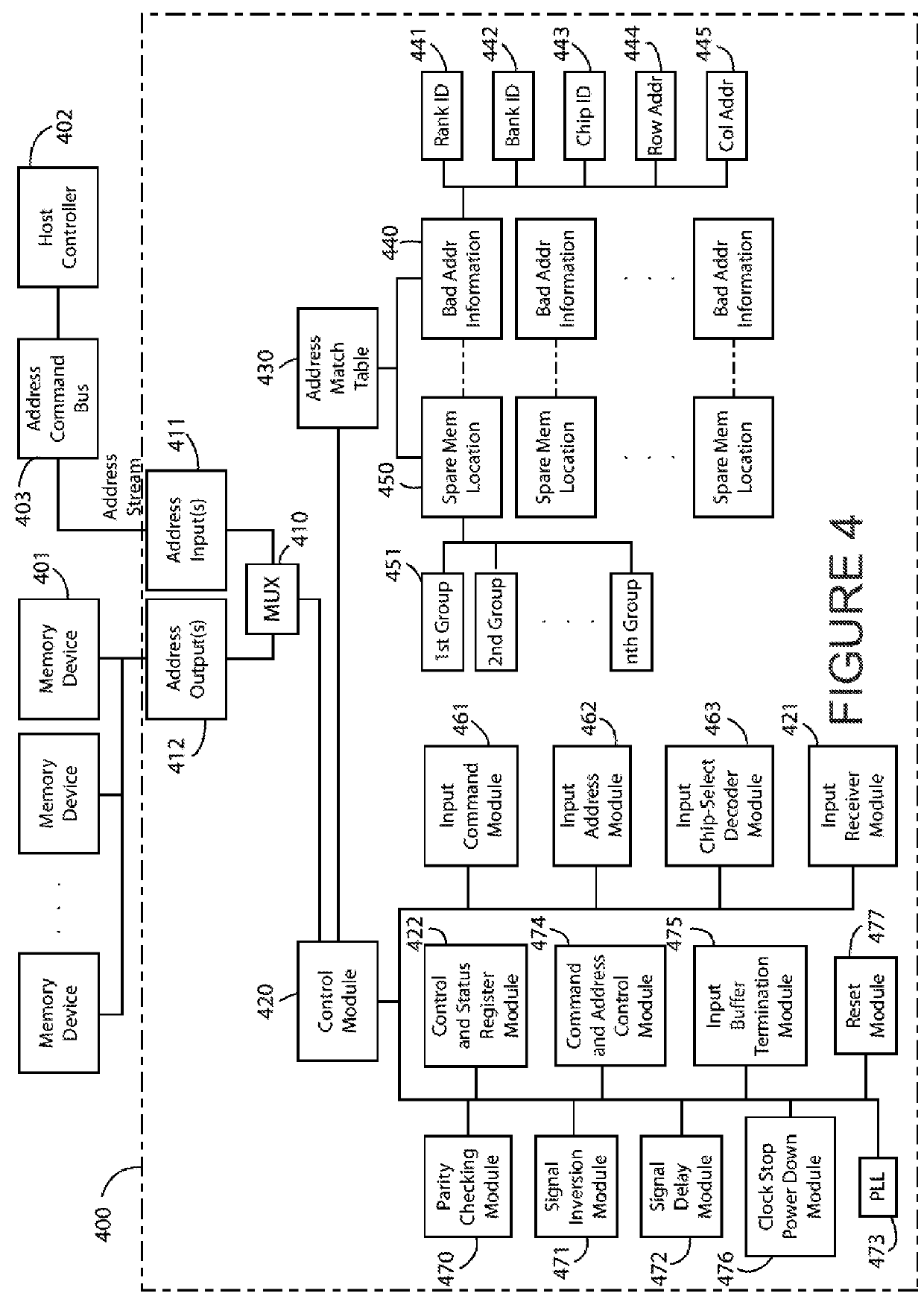Memory parametric improvements
a memory parametric and parametric technology, applied in the field of solid-state memory techniques, can solve the problems of reducing the size of the access transistor and the storage capacitor, affecting the performance of the memory, and relative longer latency memories, so as to facilitate the “repair” and improve memory performance. the effect of performance and lifetim
- Summary
- Abstract
- Description
- Claims
- Application Information
AI Technical Summary
Benefits of technology
Problems solved by technology
Method used
Image
Examples
example
[0037]Utilizing an Address Match Table in Memory Interface Circuit, Controlling Spare Memory Storage Cells to Dynamically Replace Faulty Storage Cells in Memory Devices, as illustrated by FIG. 1.
[0038]FIG. 1 shows an example of use of an enhanced interface circuit that, in combination with spare cells in DRAM devices, can function to replace faulty memory locations in the DRAM devices. In FIG. 1, an enhanced memory interface circuit, labeled as 110 is shown to contain a command and address control unit, labeled as 120, and an Address Match Table, labeled as 130. The enhanced memory interface circuit re-drives addresses and commands from the host controller to the DRAM devices, one of which is labeled as 140 in FIG. 1. The DRAM devices contain spare DRAM cells, the addresses of which the enhanced memory interface circuit can select and effect the replacement of faulty or weak storage cell locations, as illustrated by the Table in FIG. 2.
[0039]As an example, the DRAM device may includ...
PUM
 Login to View More
Login to View More Abstract
Description
Claims
Application Information
 Login to View More
Login to View More - R&D
- Intellectual Property
- Life Sciences
- Materials
- Tech Scout
- Unparalleled Data Quality
- Higher Quality Content
- 60% Fewer Hallucinations
Browse by: Latest US Patents, China's latest patents, Technical Efficacy Thesaurus, Application Domain, Technology Topic, Popular Technical Reports.
© 2025 PatSnap. All rights reserved.Legal|Privacy policy|Modern Slavery Act Transparency Statement|Sitemap|About US| Contact US: help@patsnap.com



